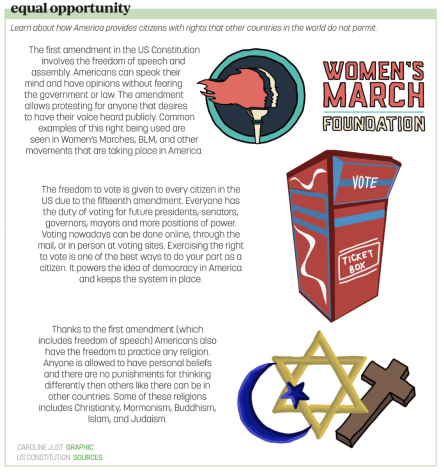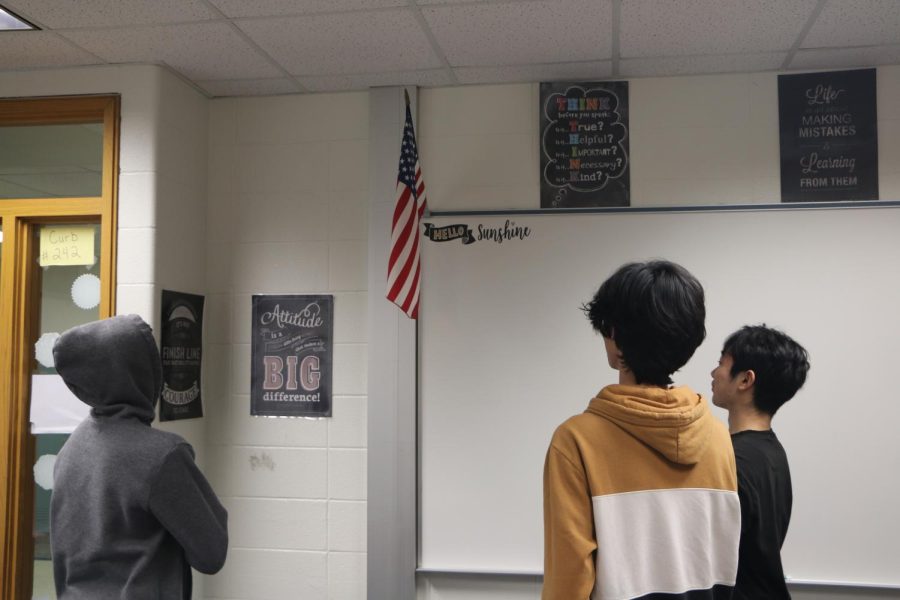Presidents Day, first celebrated in 1885 in recognition of President George Washington, is now popularly viewed as a day to acknowledge all U.S. presidents, past and present. This holiday, however, also presents an opportunity to look at the differences between patriotism and nationalism. William Ellery, IB History of the Americas teacher, said those distinctions are subtle but important.
“Patriotism is with your eyes turned inward,” he said. “It’s support for your country but it is not (like) comparative support for your country. Nationalism is that your country is right and that is comparative when you say ‘(between) my country versus another country,’ this country is right.”
Senate member and junior Ben Boyce said he agreed with Ellery, specifying the that patriotism leaves room for people to both love and criticize their country.
“With nationalism a person loves their country no matter what, but with patriotism that person can have a love for their country, but you can acknowledge its faults.”
Boyce said the reason people have trouble distinguishing between the terms is that one of their only point of references is American military involvement.

“I think (the reason people use the word patriotism and nationalism indiscriminately) is because we see a lot of foreign involvement in the military, seeing a lot of involvement of our country in (others),” Boyce said.
Chris Elmore, former CHS student and current manager of Sue Finkam’s campaign for mayor, said he agreed with what Boyce said and specifically noted the symbolism of a country’s flag.
Elmore said, “When Hoosiers look at the American flag, there are a lot of ideas that come to mind. For many, freedom and liberty come to mind.”
Elmore said those ideas of freedom and liberty are common to both patriotism and nationalism, and include the right to protest.
“Some acts of protest are seen as anti-patriotic because they are seen as tearing down history, which is critical in the social progression of western civilization,” Elmore said.
Boyce said while the distinction made between patriotism and nationalism might lend itself more naturally to a criticism of excessively nationalistic sentiment, nationalism when used for good is not inherently bad.
“I think (nationalism) invites us all together; you know, in the United States we all have these shared values. We are all citizens of the same country, so it invites us all together, it (allows us) to get things done,” Boyce said. “I think that’s really important to show other countries around the world that we are united, that the United States is going to do what’s best for their citizens. Nationalism, there are some parts that are good, it just shows unity, that our country is steady and solid.”
In this vein, Elmore said it is important to understand the difference between blind allegiance and thoughtful pride. He said following a nationalistic path without questioning legislation and authority can even lead to fascism.
Ellery said the conversation is not just about the United States, but also about students being proud of their country of origin regardless of location.
“It’s important that we understand both (patriotism and nationalism) but it is also that kids are proud of where they are from, whether it is here or another country,”
































![What happened to theater etiquette? [opinion]](https://hilite.org/wp-content/uploads/2025/04/Entertainment-Perspective-Cover-1200x471.jpg)














































![Review: “The Immortal Soul Salvage Yard:” A criminally underrated poetry collection [MUSE]](https://hilite.org/wp-content/uploads/2025/03/71cju6TvqmL._AC_UF10001000_QL80_.jpg)
![Review: "Dog Man" is Unapologetically Chaotic [MUSE]](https://hilite.org/wp-content/uploads/2025/03/dogman-1200x700.jpg)
![Review: "Ne Zha 2": The WeChat family reunion I didn’t know I needed [MUSE]](https://hilite.org/wp-content/uploads/2025/03/unnamed-4.png)
![Review in Print: Maripaz Villar brings a delightfully unique style to the world of WEBTOON [MUSE]](https://hilite.org/wp-content/uploads/2023/12/maripazcover-1200x960.jpg)
![Review: “The Sword of Kaigen” is a masterpiece [MUSE]](https://hilite.org/wp-content/uploads/2023/11/Screenshot-2023-11-26-201051.png)
![Review: Gateron Oil Kings, great linear switches, okay price [MUSE]](https://hilite.org/wp-content/uploads/2023/11/Screenshot-2023-11-26-200553.png)
![Review: “A Haunting in Venice” is a significant improvement from other Agatha Christie adaptations [MUSE]](https://hilite.org/wp-content/uploads/2023/11/e7ee2938a6d422669771bce6d8088521.jpg)
![Review: A Thanksgiving story from elementary school, still just as interesting [MUSE]](https://hilite.org/wp-content/uploads/2023/11/Screenshot-2023-11-26-195514-987x1200.png)
![Review: "When I Fly Towards You", cute, uplifting youth drama [MUSE]](https://hilite.org/wp-content/uploads/2023/09/When-I-Fly-Towards-You-Chinese-drama.png)
![Postcards from Muse: Hawaii Travel Diary [MUSE]](https://hilite.org/wp-content/uploads/2023/09/My-project-1-1200x1200.jpg)
![Review: "Ladybug & Cat Noir: The Movie," departure from original show [MUSE]](https://hilite.org/wp-content/uploads/2023/09/Ladybug__Cat_Noir_-_The_Movie_poster.jpg)
![Review in Print: "Hidden Love" is the cute, uplifting drama everyone needs [MUSE]](https://hilite.org/wp-content/uploads/2023/09/hiddenlovecover-e1693597208225-1030x1200.png)
![Review in Print: "Heartstopper" is the heartwarming queer romance we all need [MUSE]](https://hilite.org/wp-content/uploads/2023/08/museheartstoppercover-1200x654.png)



